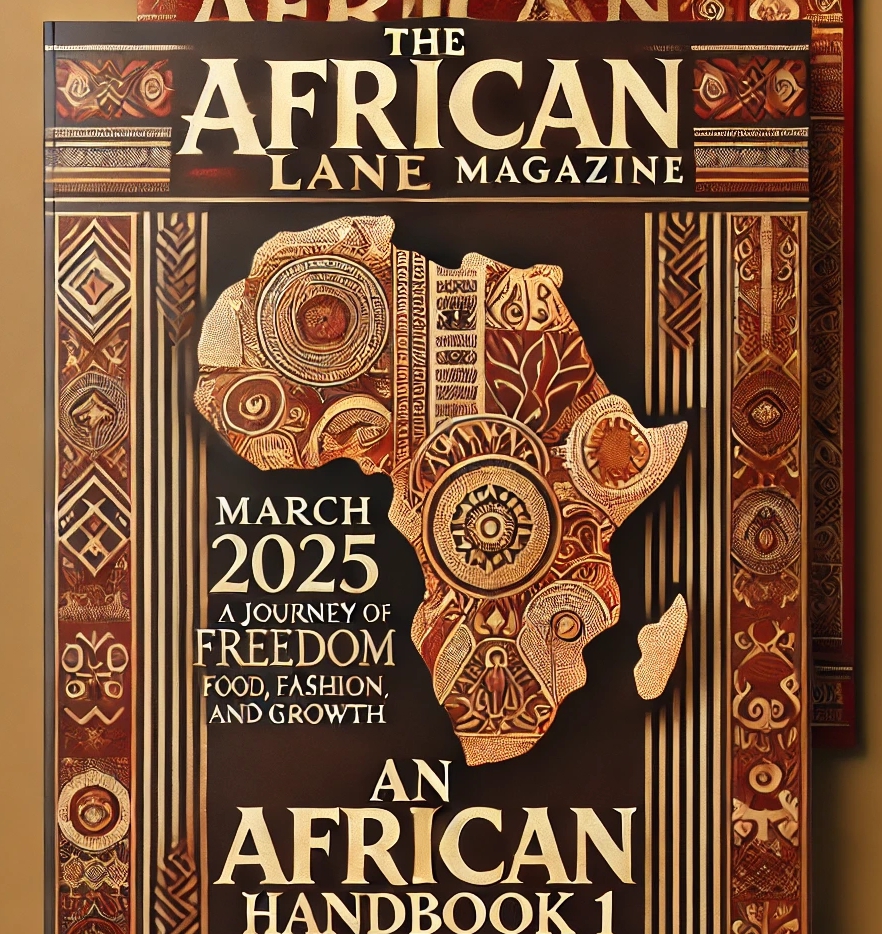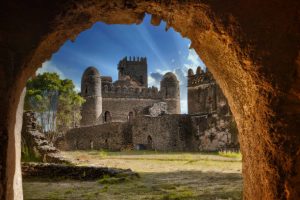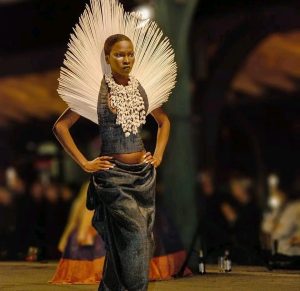The Republic of the Sudan
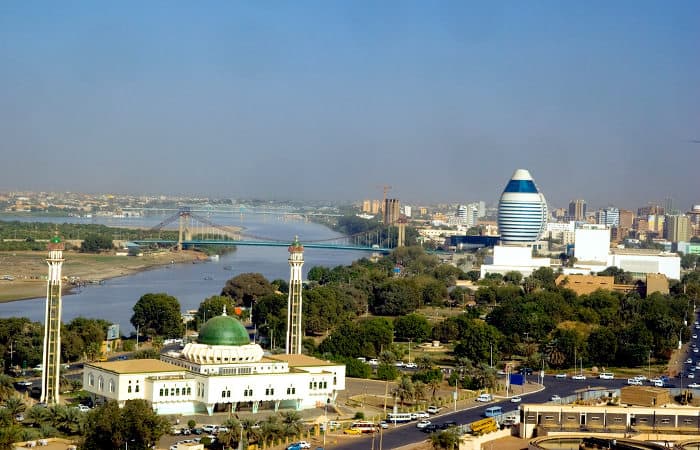
Source: tourist-destinations Khartoum Khartoum is perhaps best known as the mythical location where the two great strands of the River Nile combine before heading northwards into the ancient lands of Nubia and Egypt.
Sudan, officially the Republic of the Sudan, is a country in Northeast Africa.

Since ancient times, the Sudan region has been an arena for interaction between the cultural traditions of Africa and those of the Mediterranean world. Islam and the Arabic

language achieved ascendancy in many northern parts of the region, while older African languages and cultures predominated in the south.
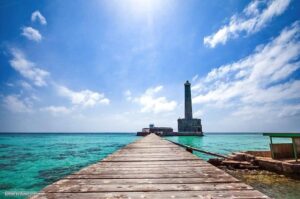
Sanganeb National Park
The first and only oceanic national park in all of Sudan, the Sanganeb National Park is made up of shallow reef habitats that showcase the sheer biodiversity of the Red Sea in all its glory.
| Capital | Khartoum 15°38′N 032°32′E |
|---|---|
| Largest city | Omdurman |
| Official languages | |
| Ethnic groups | |
| Demonym(s) | Sudanese |
| Government | Federal provisional government |
| • Chairman of the Sovereignty Council[4] | Abdel Fattah al-Burhan |
| • Prime Minister | Abdalla Hamdok |
| Legislature | Transitional Legislative Council |
| Formation | |
| • Kingdom of Kush | 1070 BC |
| • Mahdist Sudan | 1885 |
| • Anglo-Egyptian Condominium | 1899 |
| • Independence and end of the Anglo-Egyptian rule | 1 January 1956 |
| • Secession of South Sudan | 9 July 2011 |
| • Coup d’état | 11 April 2019 |
| • Constitutional Declaration | 4 August 2019 |
| Currency | Sudanese pound (SDG) |
| Time zone | UTC+2 (CAT) |
| Date format | dd/mm/yyyy |
| Driving side | right |
| Calling code | +249 |
| ISO 3166 code | SD |
| Internet TLD | .sd سودان. |
Sudan is situated in northern Africa,

Naqa
Mind-blowing Naqa sits in the shadow of the Jabal Naqa, some 170 kilometers from the capital at Khartoum.
A place of ancient treasures, the town has been reduced to a conglomeration of ruined peristyles and sun-cracked stone by the centuries.
with an 853 km (530 mi) coastline bordering the Red Sea. It has land borders with Egypt, Eritrea, Ethiopia, South Sudan, the Central African Republic, Chad, and Libya. With an area of 1,886,068 km2 (728,215 sq mi), it is the third-largest country on the continent (after Algeria and Democratic Republic of the Congo) and the fifteenth-largest in the world.
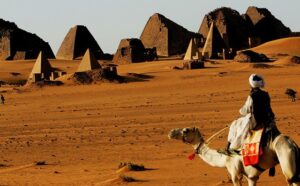
Wadi Halfa
One of the northernmost towns in the nation, the low-rise sprawl of Wadi Halfa sits between two ridges of desert rock and the waters of Lake Nubia
Sudan lies between latitudes 8° and 23°N. The terrain is generally flat plains, broken by several mountain ranges. In the west, the Deriba Caldera (3,042 m or 9,980 ft), located in the Marrah Mountains, is the highest point in Sudan. In the east are the Red Sea Hills.[142]
The Blue Nile and White Nile rivers meet in Khartoum to form the Nile, which flows northwards through Egypt to the Mediterranean Sea. The Blue Nile’s course through Sudan is nearly 800 km (497 mi) long and is joined by the Dinder and Rahad Rivers between Sennar and Khartoum. The White Nile within Sudan has no significant tributaries.

Port Sudan
Situated more than 20 hours by rattling train through the dusty deserts of upper Sudan from the capital, the country’s only large port is home to nearly 500,000 people.
There are several dams on the Blue and White Niles. Among them are the Sennar and Roseires Dams on the Blue Nile, and the Jebel Aulia Dam on the White Nile. There is also Lake Nubia on the Sudanese-Egyptian border.
Rich mineral resources are available in Sudan including asbestos, chromite, cobalt, copper, gold, granite, gypsum, iron, kaolin, lead, manganese, mica, natural gas, nickel, petroleum, silver, tin, uranium and zinc.
Historically agriculture remains the main source of income and employment hiring of over 80 percent of Sudanese, and makes up a third of the economic sector, oil production drove most of Sudan’s post-2000 growth. Currently, the International Monetary Fund (IMF) is working hand in hand with Khartoum government to implement sound macroeconomic policies. This follows a turbulent period in the 1980s when debt-ridden Sudan’s relations with the IMF and World Bank soured, culminating in its eventual suspension from the IMF. The program has been in place since the early 1990s, and also work-out exchange rate and reserve of foreign exchange. Since 1997, Sudan has been implementing the macroeconomic reforms recommended by the International Monetary Fund.
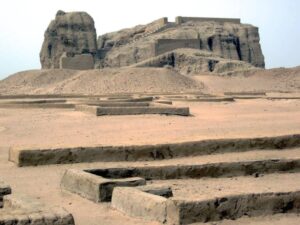
Kerma
Another great ancient relic left on the meanders of the Nile River from the civilisations of old, Kerma promises to be an experience like no other in the country
Agricultural production remains Sudan’s most-important sector, employing 80 percent of the workforce and contributing 39 percent of GDP, but most farms remain rain-fed and susceptible to drought. Instability, adverse weather and weak world-agricultural prices ensures that much of the population will remain at or below the poverty line for years.
Tradition
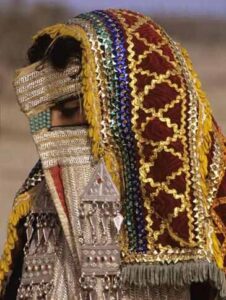
According to Sudanese culture melds the behaviors, practices, and beliefs of about 578 ethnic groups, communicating in 145 different languages, in a region microcosmic of Africa, with geographic extremes varying from sandy desert to tropical forest. Recent evidence suggests that while most citizens of the country identify strongly with both Sudan and their religion, Arab and African supranational identities are much more polarising and contested

Meroe
Meroe bears all the hallmarks of a grand architectural undertaking in the same ilk as the Nubian cities of old, and today the whole area has been accredited by UNESCO, and archaeological findings have confirmed the presence of an advanced civilisation of iron smelters and traders with mercantile links all the way to China and India!
Most Sudanese wear either traditional or western attire. A traditional garb widely worn by Sudanese men is the galabiya, which is a loose-fitting, long-sleeved, collarless ankle-length garment also common to Egypt. The galabiya is often accompanied by a large turban and a scarf, and the garment may be white, colored, striped, and made of fabric varying in thickness, depending on the season of the year and personal preferences.
The most common dress for Sudanese women is the thobe or thawb, pronounced tobe in Sudanese dialect. The thobe is a white or colorful long, one piece cloth that women wrap around their inner garments, usually covering their head and hair.
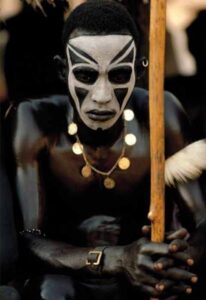
Due to a 1991 penal code (Public Order Law), women were not allowed to wear trousers in public, because it was interpreted as an “obscene outfit.” The punishment for wearing trousers could be up to 40 lashes, but after being found guilty in 2009, one woman was fined the equivalent of 200 U.S. dollars instead

Khartoum
Khartoum is perhaps best known as the mythical location where the two great strands of the River Nile combine before heading northwards into the ancient lands of Nubia and Egypt.
Sources: Wikipedia and https://www.thecrazytourist.com/15-best-places-visit-sudan/
